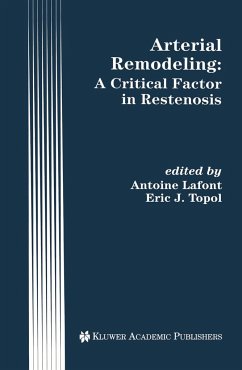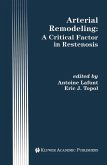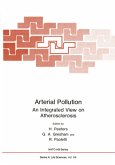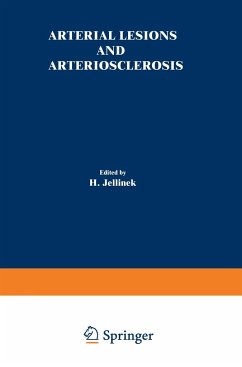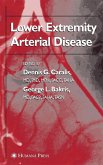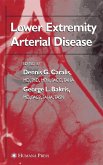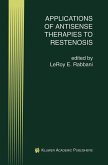Angioplasty has completely transformed the treatment of coronary artery disease and is widely used, with more than 800,000 procedures performed worldwide per year. However, the enthusiasm for angioplasty is shadowed by restenosis, which remains a critical problem after the procedure, resulting in clinical recurrence in over a third of patients. Recently, the mechanisms of restenosis have been completely reappraised with an enriched understanding that the original concept of neointimal hyperplasia may not be accounting for the bulk of the problem.
There is a desperate need to heighten understanding of the remodeling process at the molecular, cellular, and arterial level. Vascular remodeling is a well established concept in the field of atherosclerosis and hypertension, but only in recent years has its applicability to the field of restenosis become pivotal. Accordingly, the editors perceived the need to assemble the first book dedicated to the concept of coronary artery remodeling in restenosis, in order to clearly review the experiments leading to the remodeling hypothesis and integrate this with the neointimal hyperplasia (tumor) model for the development of the restenotic lesion.
The authors of this book present their experience to facilitate the understanding of the mechanisms for coronary restenosis and remodeling. The various experimental models, clinical issues, and basic mechanisms are reviewed in detail, resulting in a fresh approach to a vexing clinical problem. Arterial Remodeling: A Critical Factor in Restenosis will be useful to the physician and trainee who have an interest in restenosis, and specifically in the major pathophysiologic process which determines the fate of arterial healing in patients following percutaneous coronary revascularization. It is hoped that this book will lay the foundation for more effective therapies that will reduce the chance of constrictive remodeling and improve the long-term efficacy of non-surgical coronary revascularization in the future.
Hinweis: Dieser Artikel kann nur an eine deutsche Lieferadresse ausgeliefert werden.
There is a desperate need to heighten understanding of the remodeling process at the molecular, cellular, and arterial level. Vascular remodeling is a well established concept in the field of atherosclerosis and hypertension, but only in recent years has its applicability to the field of restenosis become pivotal. Accordingly, the editors perceived the need to assemble the first book dedicated to the concept of coronary artery remodeling in restenosis, in order to clearly review the experiments leading to the remodeling hypothesis and integrate this with the neointimal hyperplasia (tumor) model for the development of the restenotic lesion.
The authors of this book present their experience to facilitate the understanding of the mechanisms for coronary restenosis and remodeling. The various experimental models, clinical issues, and basic mechanisms are reviewed in detail, resulting in a fresh approach to a vexing clinical problem. Arterial Remodeling: A Critical Factor in Restenosis will be useful to the physician and trainee who have an interest in restenosis, and specifically in the major pathophysiologic process which determines the fate of arterial healing in patients following percutaneous coronary revascularization. It is hoped that this book will lay the foundation for more effective therapies that will reduce the chance of constrictive remodeling and improve the long-term efficacy of non-surgical coronary revascularization in the future.
Hinweis: Dieser Artikel kann nur an eine deutsche Lieferadresse ausgeliefert werden.

